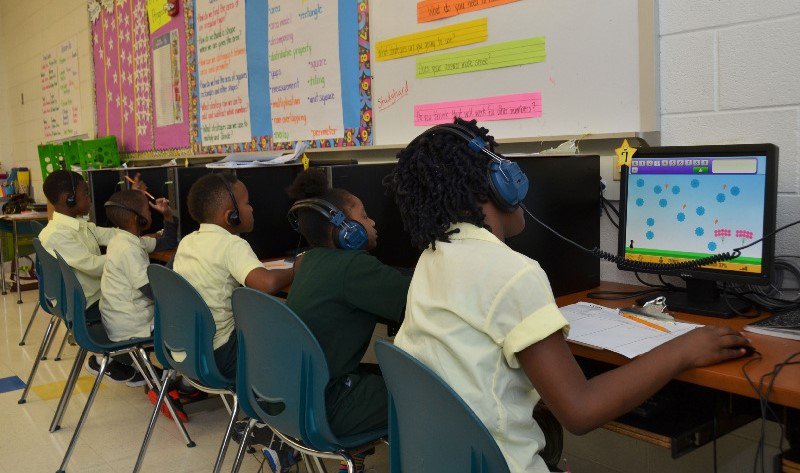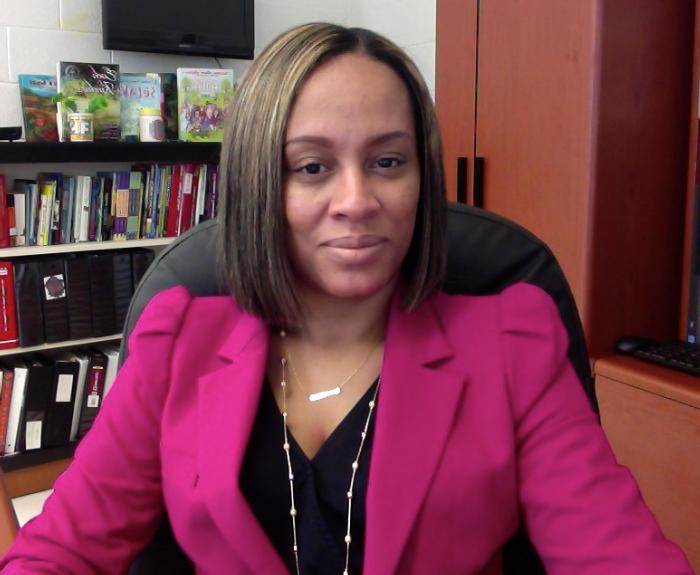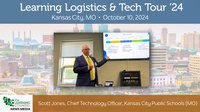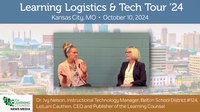Over the last eight years Washington DC Public Schools (DCPS) has been going through a huge transformation with teacher selection, teacher evaluation and teacher professional development. It goes without saying that one of the key factors in this transformation has been how to incorporate technology into instruction. The Learning Counsel spoke with Tracy Foster, the principal of Randle Highlands Elementary School, a school right in the heart of inner-city DC, to get a sense of what it takes to make the shift at school level.
“When I took the helm at Randle Highlands five years ago and there were only 5 computers in sight, a huge red flag went up for me. I knew this school wasn’t even on the radar when it came to digital curriculum and technology.” When Tracy reviewed where the students were at she found math at 20% proficiency and their reading scores were in the high 30s. Today they rank among the highest in the district. Last year 62% of their students grew in ELA and 87% of their students grew in math. The District average was 51%.
Randle Highlands demographics are what you would expect of an inner-city school: 99% African American, 13% special ed. 97% of students qualify for free and reduced meals and their ward is one of the two poorest in the District of Columbia. Last year their out of school suspension rate was 4%. Today, following a rigorous program to implement digital curriculum and devices and teacher training, Tracy has her long term suspensions down to 0%. The district did a student satisfaction survey and Randle Highland’s students gave their school a 96% satisfaction rating.
Principal Tracy Foster, Randle Highlands Elementary
When Tracy looked at the school achievement data I realized that 40% of our students were missing proficiency by, like, 5 points so the District interventions that they had, were too low, they were for students that were 2 and 3 grade-levels below so they weren’t doing us any good.
“There was interest in technology but there was a lack of technology integration because we simply didn’t have the hardware or the infrastructure for it. My local school advisory team, which is made up of teachers, parents and union representatives decided to come up with a two-year technology plan to address intervention because it was just too much to ask the teachers to provide intervention and deliver grade-level curriculum. Our first year we allocated $56,000 of our local school funds. Then I repurposed some human capital and saved another $500,000 doing that. Then through a grant for technology we gained another $250,000.
The next problem Tracy realized she had was that you can’t just put technology in a building and expect teachers to know how to use it. Because then you’d have teachers using everything from Kahn Academy all the way to Nickelodeon and the lack of structure just won’t work.
Tracy and her team used the funds to focus first on upgrading infrastructure. They brought in 165 Dell desktops which meant that each of their classes had 8 computers. Each of their classrooms were also retrofitted with smartboards. They hired an instructional technology coach to get involved in every aspect of integration and be Tracy’s eyes and ears on the ground.
“They most valuable piece in making it all happen was having a team working together with a common purpose to design the model and be focused,” stated Tracy. “There was myself and my teachers, along with our partners from the District. We decided what our children needed. So it was different. It wasn’t something that the District created and said “hey, here do this”. We actually created it over the summer in a series of design workshops. We picked the content, we designed the model, we decided what was going to happen in the model and what was realistic for teachers in terms of implementation.”
They had students of various different needs and the team’s goal was to bring the school out of a period of intervention. Then, once they did that, they would be able to think about switching it out and using the digital content to enhance instruction.
Randle Highland’s station rotation model has two major blocks—two 120 minute blocks where they only engage for 10 minutes in whole-group-instruction. Then they rotate into three 35 minute intervals. From the teacher, to independent learning activities to digital content, and then a 5 minute closure. As far as digital curriculum providers, these include ST Math, IReady reading and math, Lexia reading and myON.
“That change—continuing to grant teachers control and independence while knocking out whole-group-instruction—is the hardest part. I have windows to each classroom and I can peer into the classroom and I would peer into a classroom and I would tap on my watch to tell a teacher, ‘get out of whole-group.’ And there were times I would have to step into a classroom and say ‘stop teaching whole-group please.’ That’s the hard part, if you can get over the hurdle of the culture and the management in the classroom then it really, then, becomes easier.”
Their station rotation model has now been adopted by the district for many of the Elementary schools. There are now 40 schools in the district that are incorporating technology into the learning. Ten are full-on blended learning schools that are following this model.












